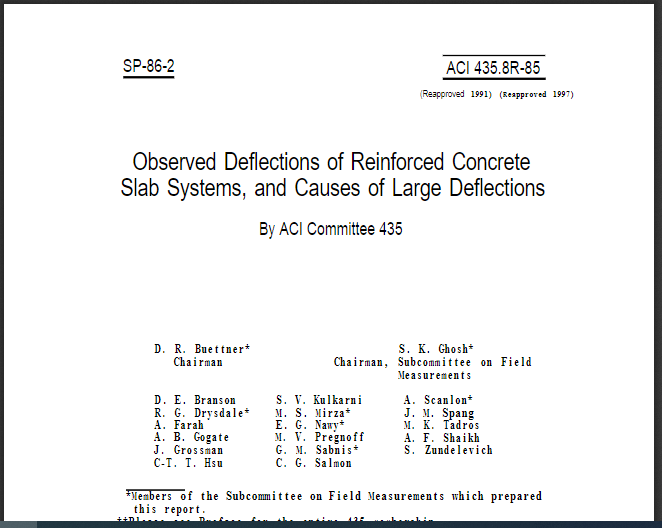Description
-
 MS Office Home & Business 2024 – Lifetime License Key – Mac/PC$150.00 – $160.00
MS Office Home & Business 2024 – Lifetime License Key – Mac/PC$150.00 – $160.00 -
![Observed Deflections of Reinforced Concrete Slab Systems, and Causes of Large Deflections 4 [Retail] Office 2021/2019/2016 Pro Plus Activates 5 PCs Online](https://civilmdc.com/wp-content/uploads/2024/05/Microsoft-Office-professional-plus-all-in-one-free-download-e1717158603220-300x300.jpg) [Retail] Office 2021/2019/2016 Pro Plus Activates 5 PCs Online$50.00 – $120.00
[Retail] Office 2021/2019/2016 Pro Plus Activates 5 PCs Online$50.00 – $120.00 -
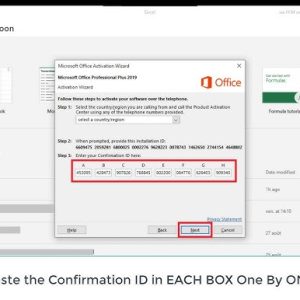 Microsoft office /Windows Activation Service for Phone Activation Method (Get Confirmaiton ID)$3.00
Microsoft office /Windows Activation Service for Phone Activation Method (Get Confirmaiton ID)$3.00 -
 MS SQL Server 2022 Standard | 1 Key for 1 PC$80.00
MS SQL Server 2022 Standard | 1 Key for 1 PC$80.00 -
 Youtube Premium | 4 months Premium Membership$10.00
Youtube Premium | 4 months Premium Membership$10.00 -
Product on sale
 Adobe Stock 40 creditsOriginal price was: $99.00.$20.00Current price is: $20.00.
Adobe Stock 40 creditsOriginal price was: $99.00.$20.00Current price is: $20.00. -
Product on sale
 MS Office 2021 Home & Business 1 MAC Bind for iOSOriginal price was: $429.00.$85.00Current price is: $85.00.
MS Office 2021 Home & Business 1 MAC Bind for iOSOriginal price was: $429.00.$85.00Current price is: $85.00. -
 MS Office 365 Personal | Family Plan on Your Email Id – 1 Year subscription$30.00 – $66.00
MS Office 365 Personal | Family Plan on Your Email Id – 1 Year subscription$30.00 – $66.00 -
 MS Project Professional 2024 | 2021 | 2019 | 2016 1 PC Online key Activation$20.00 – $55.00
MS Project Professional 2024 | 2021 | 2019 | 2016 1 PC Online key Activation$20.00 – $55.00 -
Product on sale
 Adobe Creative Cloud (All apps) – PersonalOriginal price was: $560.00.$200.00Current price is: $200.00.
Adobe Creative Cloud (All apps) – PersonalOriginal price was: $560.00.$200.00Current price is: $200.00. -
 Windows Server 2019 Online Key$22.00
Windows Server 2019 Online Key$22.00 -
 MS Office Visio Professional 2024 | 2021 | 2019 | 2016 PC Online Key Activation$20.00 – $45.00
MS Office Visio Professional 2024 | 2021 | 2019 | 2016 PC Online Key Activation$20.00 – $45.00 -
Product on sale
 MS 2019 Project Professional Windows 1 PC Online keyOriginal price was: $429.00.$22.00Current price is: $22.00.
MS 2019 Project Professional Windows 1 PC Online keyOriginal price was: $429.00.$22.00Current price is: $22.00. -
 McAfee LiveSafe Internet Security Antivirus 1 PC – 10 YEARS – Key$29.00
McAfee LiveSafe Internet Security Antivirus 1 PC – 10 YEARS – Key$29.00 -
 Office Professional 2016 – Lifetime License Key – 1PC$18.00
Office Professional 2016 – Lifetime License Key – 1PC$18.00
Three experimental flat plat structures were erected at the Division of Building Research, Commonwealth Scientific and Industrial Research Organization, Melbourne, Australia. The investigations were carried out under field conditions, the structures being completely exposed to the weather. Structure Mark I consisted of an expanded shale concrete slab, 3-l/2 in. thick, spanning three bays of 9 ft in one direction and three bays of 12 ft in the other, with cantilevers 4 ft6 in. long in this direction. The reinforcement was conventional individual plain round bars and was designed by the empirical design method given in ACI 318-56.
The slab was carried on 16steel columns of box section with a grillage type shear connec-tion. The significant features of this structure were (1) span/depth ratios of 41 in one direction and 31 in the other; (2) the ratio 4:3 of the sides of the panels; and (3) the steel columns. of lightweight aggregateconcrete was also an important Further, no edge beams or torsion reinforcement near the edge columns was used. The long-term deflections reached “annoying” proportions.The slab was allowed to stand under its own weight for 8 months ,during which time the deflection at the center of the middlepanel increased by O.62 in.
This was 12 times the initial elas-tic deflection of O.O5 in.In a study of the long-term deformation of this structure it was suggested that about 2O% of theincrease at the center of the middle panel was due to differential settlement of inner and outer columns, about 4O% was due tofurther cracking causing a reduction in stiffness, and to localbond slip, and about 4O% to creep. This analysis also suggestedthat the increment of deflection due to creep was about 85% ofthe immediate deflection of a completely cracked slabs.
-
 Bitdefender Total Security Antivirus | Genuine Activation Code$30.00
Bitdefender Total Security Antivirus | Genuine Activation Code$30.00 -
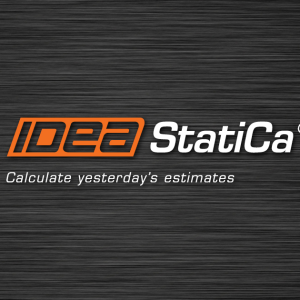 IDEA StatiCa Education$30.00
IDEA StatiCa Education$30.00 -
 Stealth Writer AI | Bypass AI Detection | Get 100% Human Score$10.00
Stealth Writer AI | Bypass AI Detection | Get 100% Human Score$10.00 -
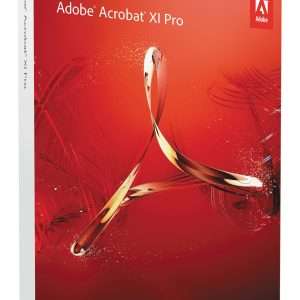 Adobe Acrobat XI Professional with License Key Activation$29.00
Adobe Acrobat XI Professional with License Key Activation$29.00 -
 Autocad 2007 – OFFLINE INSTALLER + Video Tutorial Install and activation – LIFETIME$7.00
Autocad 2007 – OFFLINE INSTALLER + Video Tutorial Install and activation – LIFETIME$7.00 -
 ChatGPT PLUS Subscription$7.00
ChatGPT PLUS Subscription$7.00 -
 ESET Internet Security Antivirus | 1 Year License$20.00
ESET Internet Security Antivirus | 1 Year License$20.00 -
 Course Hero Account 📗1 month$10.00
Course Hero Account 📗1 month$10.00 -
 General Software Collection | Request books, Codes, Research Articles | Request Software on Demand$3.00 – $35.00
General Software Collection | Request books, Codes, Research Articles | Request Software on Demand$3.00 – $35.00 -
 Vmware Workstation 16 Pro Lifetime License$150.00 – $199.00
Vmware Workstation 16 Pro Lifetime License$150.00 – $199.00 -
 NORD VPN/IP Vanish Account Subscription 6 Month | 1 Year | 2 Years$20.00 – $60.00
NORD VPN/IP Vanish Account Subscription 6 Month | 1 Year | 2 Years$20.00 – $60.00 -
 Internet Download Manager IDM Version 6.41 fully lifetime activation with installation video | 5 times faster download (Pre-Activated)$6.00
Internet Download Manager IDM Version 6.41 fully lifetime activation with installation video | 5 times faster download (Pre-Activated)$6.00 -
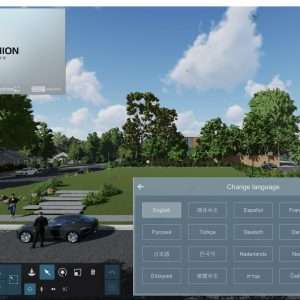 Lumion 2023 | 12.5 | 12 |11.5 Pro Full (Lifetime) – Include Installation Tutorial$10.00 – $30.00
Lumion 2023 | 12.5 | 12 |11.5 Pro Full (Lifetime) – Include Installation Tutorial$10.00 – $30.00 -
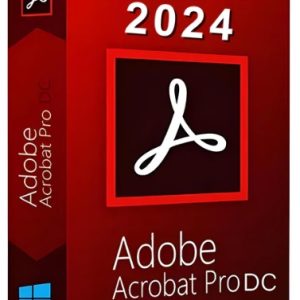 Adobe Acrobat Pro DC 2024 | 2023 | 2022 | 2021 | 2020 | Latest Full Version | Lifetime$10.00 – $20.00
Adobe Acrobat Pro DC 2024 | 2023 | 2022 | 2021 | 2020 | Latest Full Version | Lifetime$10.00 – $20.00 -
![Observed Deflections of Reinforced Concrete Slab Systems, and Causes of Large Deflections 32 Sketch Up Pro 2024 | 2023 | 2022 | 2021 Full Package Bundle + Vray 6 + Enscape 3.4 + Thea Render 3.5 [Lifetime & Full]](https://civilmdc.com/wp-content/uploads/2022/03/Sketch-Up-Pro-2023-300x300.jpg) Sketch Up Pro 2024 | 2023 | 2022 | 2021 Full Package Bundle + Vray 6 + Enscape 3.4 + Thea Render 3.5 [Lifetime & Full]$10.00 – $40.00
Sketch Up Pro 2024 | 2023 | 2022 | 2021 Full Package Bundle + Vray 6 + Enscape 3.4 + Thea Render 3.5 [Lifetime & Full]$10.00 – $40.00


